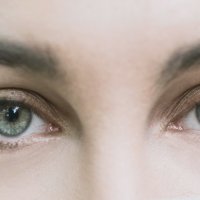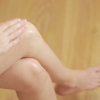Home > Blog > Skin and Body
How Mold Can Affect Our Health

Photo by Steven Ungermann on Unsplash
Mold has roamed the Earth for millions of years. That means that it is natural, and it is everywhere. Mold grows and thrives in areas of moisture, such as swamps, jungle floors, and our very own homes. This article will discuss the good and bad about mold, and how it really affects our health.
When it comes to our homes, mold can grow in a variety of places, both indoors and outdoors. Some common places include doorways, windows, vents, heating and air conditioning systems. Mold will also grow where leaks and flooding occur in a home, such as the roof, carpet, pipes, and any other damp area.
Mold will affect people in different ways, depending on their sensitivity or any immune system deficiencies. For healthy people who have little to no sensitivities, mold may have no adverse effect on their health. For people who are more sensitive to mold, it can cause nasal stuffiness, throat irritation, coughing and wheezing, and eye and skin irritation. People with mold allergies, as well as immune-compromised people, may have more severe reactions, such as lung and respiratory infections. People that can have serious reactions to mold should avoid outdoor areas where mold thrives, such as wooded areas, compost piles, and fresh cut grass.
In 2004 the Institute of Medicine (IOM) found there was sufficient evidence to link indoor exposure to mold, and damp indoor environments in general, with upper respiratory tract symptoms, cough, and wheeze in otherwise healthy people; with asthma symptoms in people with asthma; and with hypersensitivity pneumonitis in individuals with weakened immune systems. Other studies have shown a connection with the exposure of mold in early childhood to the development of asthma in children, with an even higher risk in children who are already susceptible to developing asthma. These same studies have also shown that intervening with household mold can reduce morbidity from asthma and other respiratory illnesses.
For mold removal in the home, it’s a good idea to contact a professional that can test the air quality and remove the mold safely. However, there are specific steps from the Center of Disease Control (CDC) that homeowners can take to prevent mold growth in the home. Some of which include:
- Keep humidity levels low in your home, typically no higher than 50%.
- Make sure your home is properly ventilated, and utilize ventilation in the kitchen and bathrooms.
- Fix any leaks or flooding in your home immediately to prevent the growth of mold. Occasionally check the roof for any leaks.
- Use mold inhibitors in your paint when painting the house.
- Use mold-killing cleaning products.
- Consider removing carpet in areas that are more susceptible to mold growth, such as the bathroom and kitchen.
Mold often appears spotty, and can be a variety of colors. It may be odorless or carry a musty smell. If you choose to remove the mold yourself, it can be removed from hard surfaces with commercial cleaning products, soap and water solutions, or light bleach solutions. If you choose to use bleach, make sure to use it safely by following these precautions:
- Never mix bleach with ammonia or other household cleaners, as it can create toxic fumes.
- Open windows and doors for proper ventilation.
- Wear gloves and protective eyewear.
- Always follow instructions and warnings on commercial bleach products.
Living in a safe, healthy environment is the best way to avoid adverse symptoms and respiratory illnesses, even if a person appears healthy and has no sensitivities to mold. Knowledge, mold removal, and mold prevention will give everyone a greater quality of life, even if mold has lived on the Earth for much longer than we have.
More to Read:
Previous Posts:






